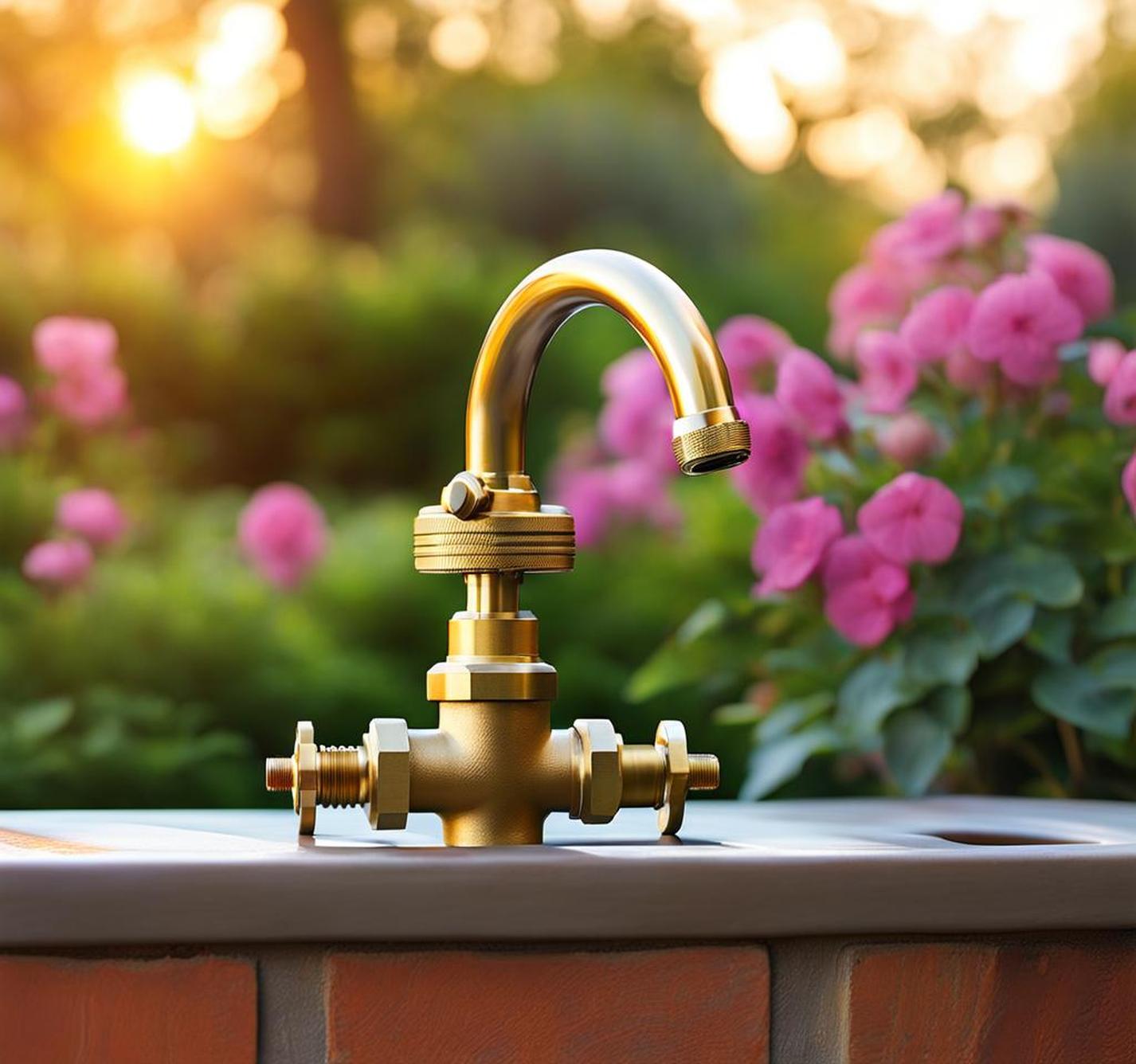Installed on the exterior walls of homes and buildings, outdoor spigots, also known as hose bibbs, provide a convenient water source for gardening, washing cars, filling pools, and various outdoor tasks. But what exactly are the parts that make up these humble yet handy fixtures? Understanding the components of an outdoor spigot allows homeowners to properly maintain and repair issues as they arise.
Whether you’re installing a new hose bibb or troubleshooting problems on an existing one, discovering how these fixtures function will ensure your outdoor water needs are met.
External Parts: Handles, Nuts, and Connections
The external parts of an outdoor spigot include components that are visible and accessible without disassembling the fixture. These external parts allow the user to securely attach a garden hose and turn the water on and off.
Spigot Handles Control Water Flow
The handle is located at the top of the spigot and serves as the mechanism to control water flow. Spigot handles come in two main designs:
- A wagon wheel or cross handle with spokes radiating out from a center hub.
- A handle with two wings or levers protruding on either side.
Handles are typically made of durable metal like brass or zinc. Some feature a plastic or silicone coating for enhanced grip and comfort. Turning the handle counterclockwise opens the valve and allows water to flow through the spigot. Turning it clockwise closes the valve and cuts off water flow.

Packing Nuts Secure the Handle
The packing nut, also known as the bonnet nut or stem nut, is a metal fastener that secures the spigot handle to the stem assembly. Located just below the handle, this removable nut threads onto the stem and holds the handle firmly in place. Tightening the packing nut compresses the packing washer inside to prevent water from leaking out around the stem.
Hose Connections Link to Garden Hoses
The hose connection is the threaded nozzle at the bottom of the spigot that the garden hose screws onto. Most residential spigots have 3/4″ hose connections made of brass, steel, or plastic. The threaded design provides a tight, leak-free connection when attaching hoses for watering.
Internal Components: Stems, Seals, and Valves
Within the body of the spigot are internal parts that control the water supply. These components include the valve system, sealing washers, and stem assembly that connects to the external handle.
Stems Transfer Motion to the Valve
The stem is the rod that runs through the center of the spigot connecting the external handle to the internal valve mechanism. When you turn the handle, the stem rotates to open or close the valve inside, controlling water flow. Most spigot stems are made of brass or stainless steel for durability.
Packing Washers Prevent Leaks
Packing washers provide the critical sealing function on hose bibbs. A small rubber or plastic washer fits around the stem between the packing nut and valve body. Tightening the packing nut squeezes the washer, creating a watertight seal to prevent water from leaking around the moving stem.
Gate, Globe, and Ball Valves Control Water
The valve inside the spigot body regulates the flow of water with an open/close mechanism. Gate, globe, and ball valves are common designs in outdoor spigots. Gate valves use a sliding wedge disc to stop flow. Globe valves seal with a movable rubber disc. Ball valves rotate a perforated ball to direct flow.
Additional Parts Enhance Function
Beyond the basic components, outdoor spigots can also feature specialized parts to improve functionality, weather resistance, and safety.
Anti-Siphon Valves Prevent Backflow
Anti-siphon valves are designed to prevent contaminated water from siphoning back into the home’s plumbing system. They contain a spring-loaded check valve that only allows water to flow in one direction.
Insulating Jackets and Covers Prevent Freezing
In climates prone to freezing temperatures, insulating covers help protect outdoor spigots. Foam jackets fit around the fixture while hose bibb covers cap the end. Both block cold air and prevent pipes from bursting.
Drain Valves Allow Winterization
Many outdoor spigots include a drain valve at the bottom to manually drain the line. Opening this valve is crucial when winterizing to remove standing water and prevent freeze damage.
Understanding the anatomy of an outdoor spigot enables proper maintenance and repairs. Check for leaks around washers and nuts annually. Replace worn washers and o-rings to prevent drips. Use insulating accessories in winter. And familiarize yourself with the parts so fixing issues is a breeze.
You can keep your hose bibb working properly with this overview. Reach for this helpful guide whenever you need to troubleshoot problems or replace parts on your fixture.
